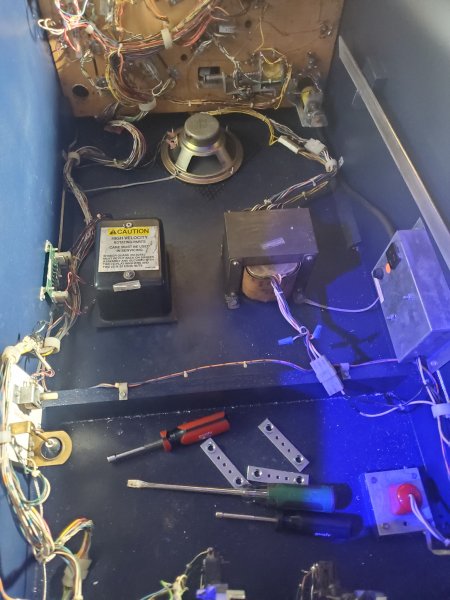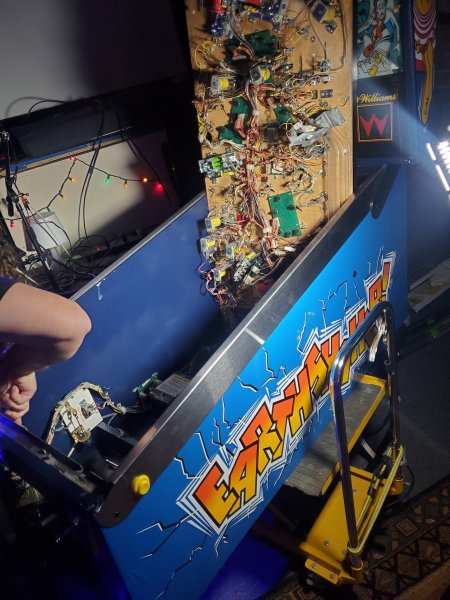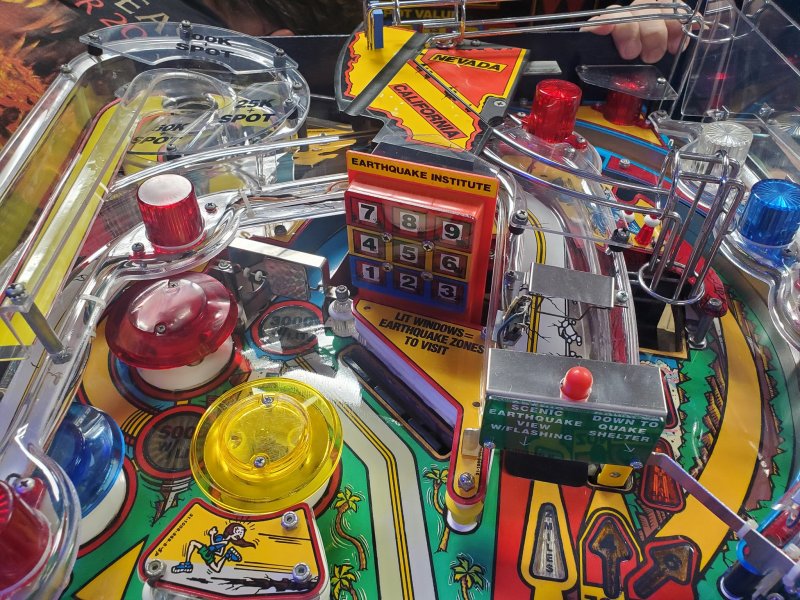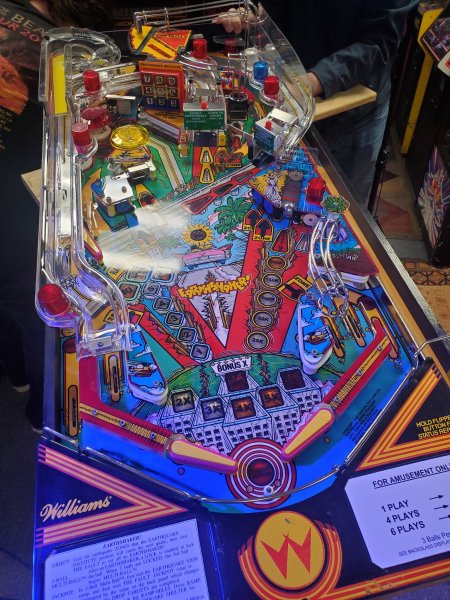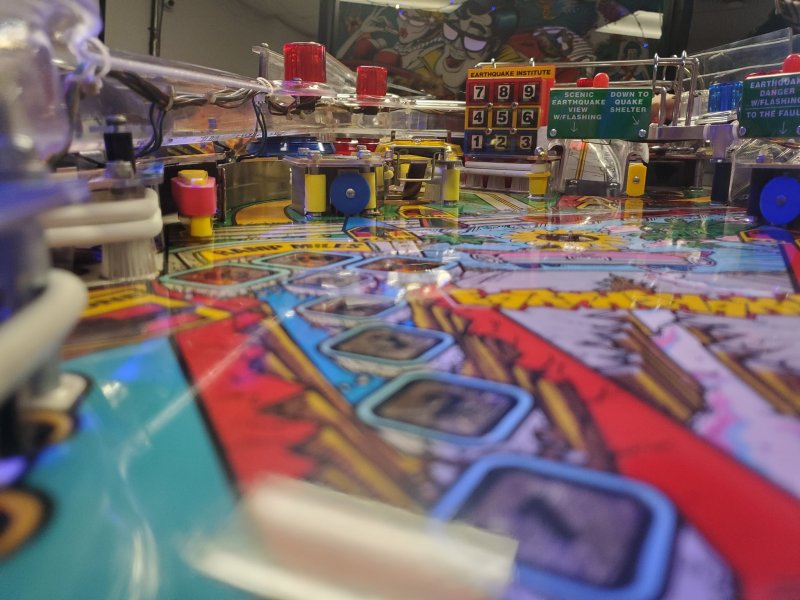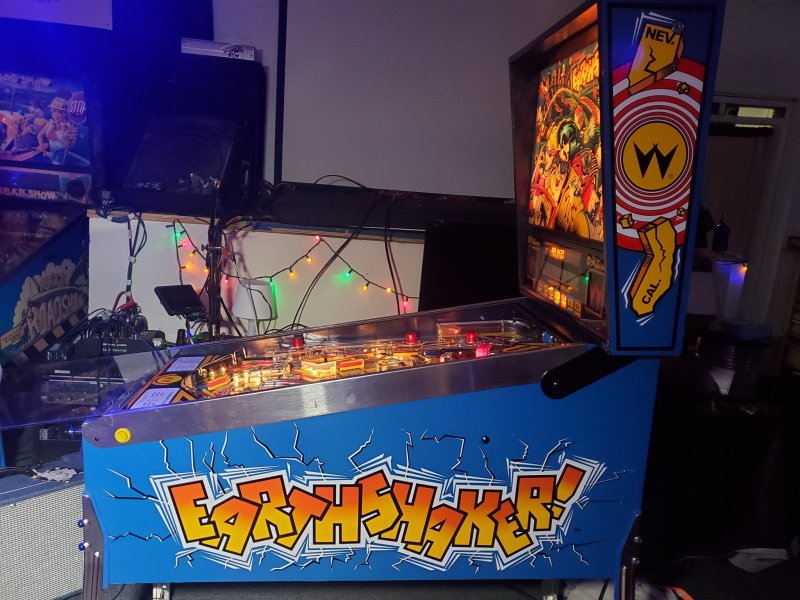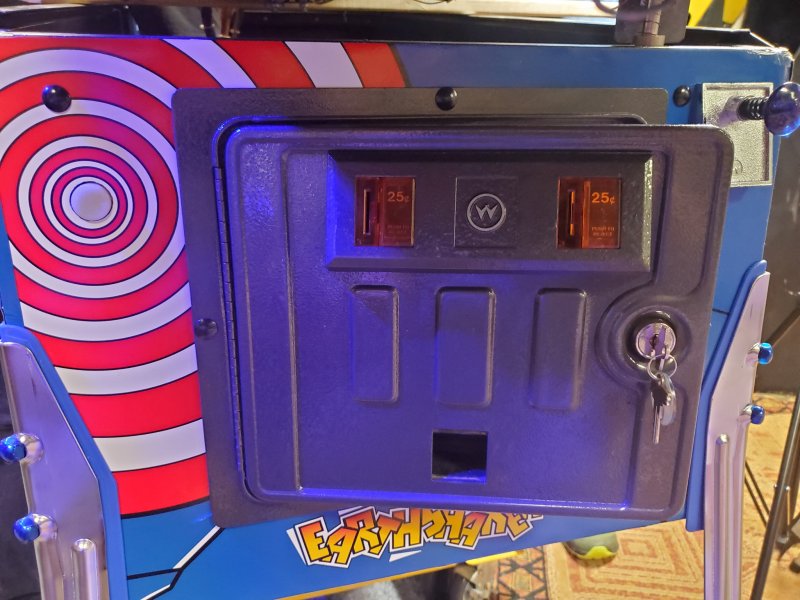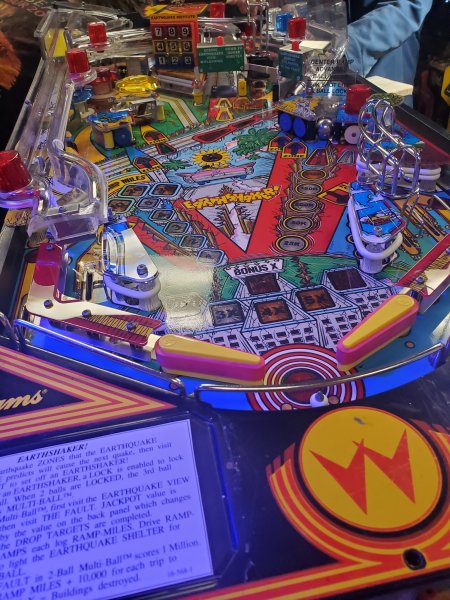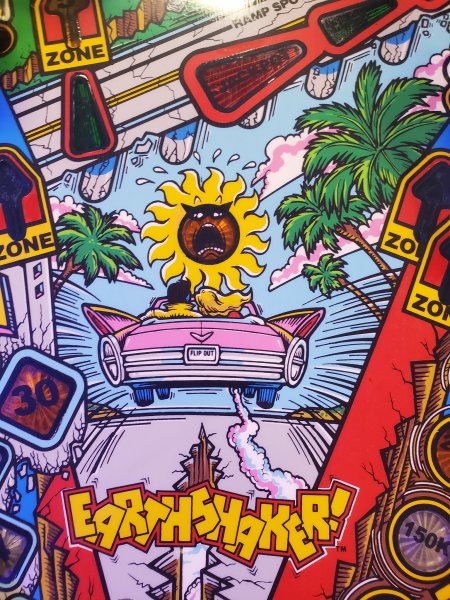Over the years, probably one of the most asked questions I’ve gotten from people is, “Whatever happened to that Earthshaker you were working on?”
People are referring to this video series: Williams Pinball Earthshaker Looks Like It was in an actual Earthquake!
I picked up this game nine years ago. Pulled it out of a filthy house where the game had sat for years, no legs, no glass, non-operational, in a house full of cats. The game looks like it has numerous things living in it, and the cabinet became a cat scratching post.
The more I looked at it, the more problems I found. The game had been monkeyed with in more ways than I’d seen with any other machine. Nonetheless, I managed to actually, finally get the game to boot up, but it was so horribly mangled in so many ways, it would take years to acquire the necessary parts at reasonable prices, so I stored the game and would pick up parts here and there over the years, hoping one day to restore the game.
Last year a friend inquired about the game and I realized, I didn’t have the time any time soon to tackle this project. I had so much going on I decided to sell it to a friend who I knew would invest the time needed to bring this treasure back. So I gave him all the parts I’d collected, including original cabinet artwork that I got from Gene Cunningham of Illinois Pinball.
The other day, my buddy Josh contacted me to let me know he had finished the restoration and if he could bring the game to the PinChurch to share with others. I jumped at the chance to see what progress had been made with the game, and share with everybody else.
Before I show you the AFTER, take a look at these two BEFORE videos:
You can find more details on the repairs and early restoration here.
Here’s a video of the restored Earthshaker – check it out – amazing work!
Here are some pictures:

